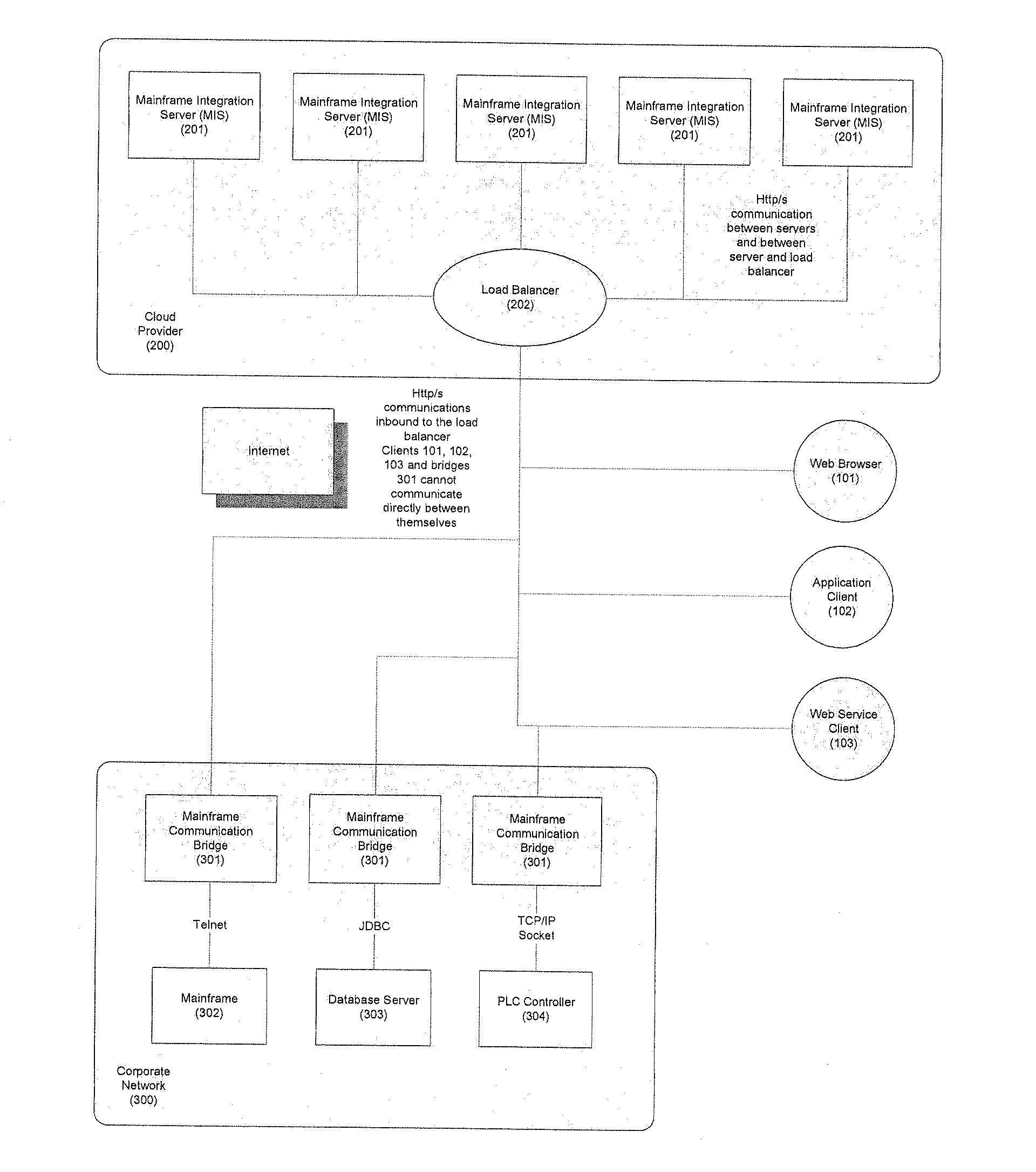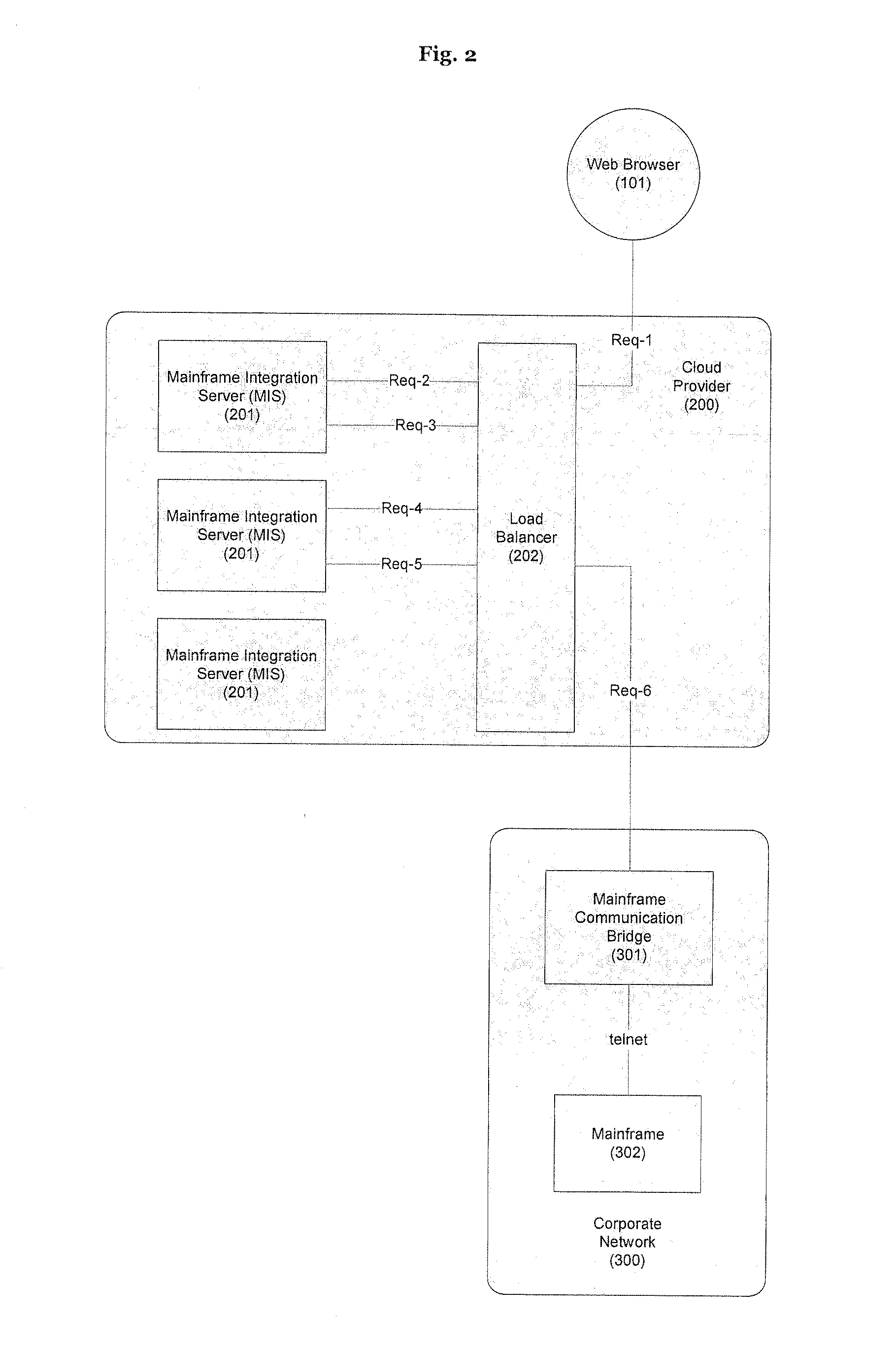Cloud-based mainframe integration system and method
a mainframe and integration system technology, applied in the field of cloud-based mainframe integration system, can solve the problems of not supporting encapsulation of multiple mis instances, unable to be employed, and unable to support increasing and decreasing the number, so as to achieve optimal resource utilization, facilitate the restoration of the process, and optimize the optimal balance of the processing load of multiple client/mainframe communications
- Summary
- Abstract
- Description
- Claims
- Application Information
AI Technical Summary
Benefits of technology
Problems solved by technology
Method used
Image
Examples
Embodiment Construction
[0028]In the following, a presently preferred embodiment of the invention is described with respect to a mainframe integration system as schematically shown in FIG. 1. As can be seen, the system comprises at least one mainframe integration server (MIS) 201 which is preferably responsible for the business logic of the mainframe integration and which may thus perform processes such as terminal emulation, screen identification, representing screen information as objects and / or rendering web interfaces from mainframe screens. The MIS 201 preferably hosts most of the functionality included in products such as the ApplinX server of applicant. Furthermore, the system comprises at least one mainframe communication bridge (MCB) 301 acting as a bridge between the MIS 201 and the mainframe 302. The MCB 301 is preferably responsible for communicating with the mainframe 302 using a mainframe protocol, such as telnet over a TCP / IP socket, as well as communicating with the MIS 201 using a standard...
PUM
 Login to View More
Login to View More Abstract
Description
Claims
Application Information
 Login to View More
Login to View More - R&D
- Intellectual Property
- Life Sciences
- Materials
- Tech Scout
- Unparalleled Data Quality
- Higher Quality Content
- 60% Fewer Hallucinations
Browse by: Latest US Patents, China's latest patents, Technical Efficacy Thesaurus, Application Domain, Technology Topic, Popular Technical Reports.
© 2025 PatSnap. All rights reserved.Legal|Privacy policy|Modern Slavery Act Transparency Statement|Sitemap|About US| Contact US: help@patsnap.com



